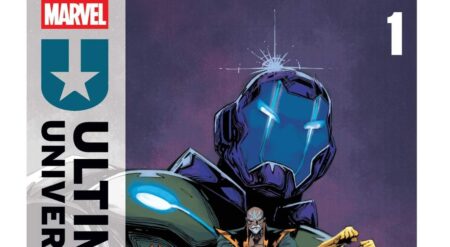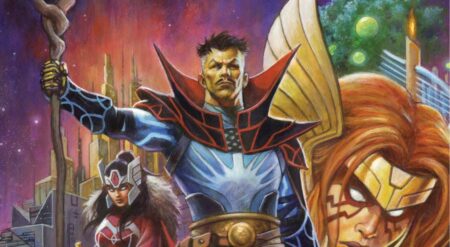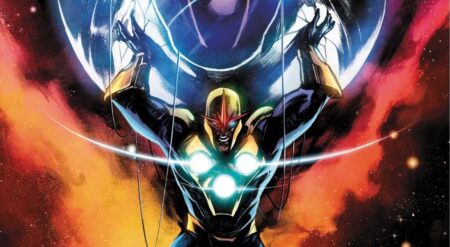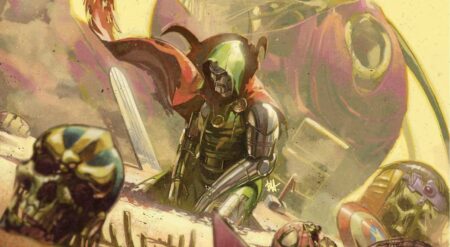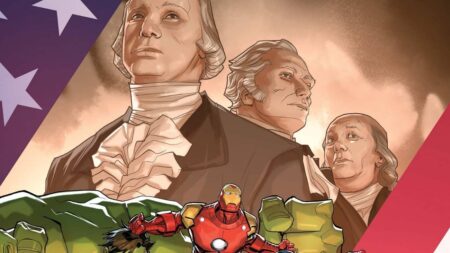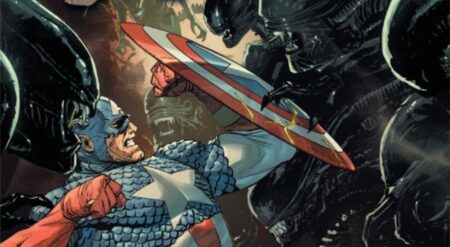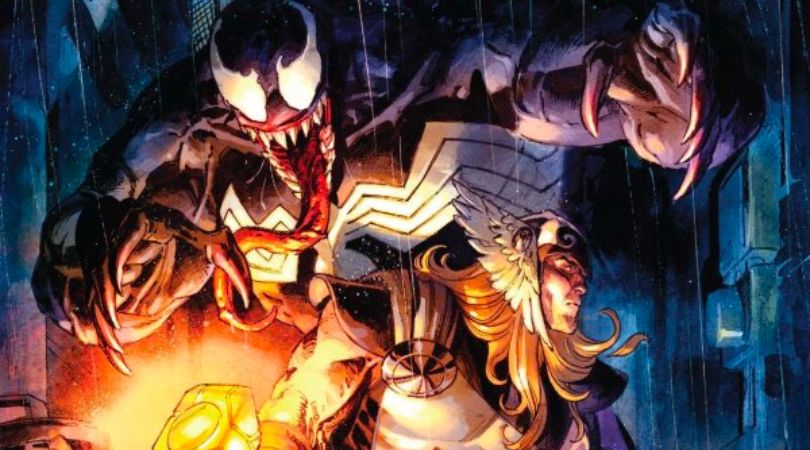
Thor #27 is written by Al Ewing from a plot by Ewing and Donny Cates, illustrated by Salvador Larroca, colored by Edgar Delgado, and lettered and designed by VC’s Joe Sabino. It’s published by Marvel Comics. Thor is at a crossroads: the spirit of his father Odin is haunting his hammer Mjolnir, and he’s had visions of his own death at the hands of Thanos. And as if that wasn’t bad enough, the Hulk irradiated him with gamma energy during their last battle, which caused him to lash out and destroy the Bifrost Bridge.
With no means of travel, Thor tasks his brother Loki with creating a new Bifrost. But in the process, Loki inadvertently unleashes Darkoth the Death Demon—an old foe of Thor’s. Darkoth has mysteriously been possessed by a symbiote, and this draws the attention of Eddie Brock, aka Venom. But even with the combined might of the King in Black and the King of Thunder, can Darkoth be stopped?
In the same vein as the Banner of War crossover, this two-part story brings together characters that Cates has worked on before—namely, Venom and Thor. It also marks the first time he and Ewing have joined forces to write a story, and the combination of their talents is something to behold. In retrospect, I’m surprised it didn’t happen sooner. They both have deep knowledge and love of Marvel history, and both have taken some bold swings with the characters they’ve written. So it only makes sense that though Ewing writes the script, parts of his dialogue still have the same flair as Cates’ writing. It’s also just fun to see born-and-bred New Yorker Eddie Brock strike up a casual conversation with an actual God.
Another special arc means another guest artist, and Larroca steps up to the plate. While I’ve enjoyed most of Larroca’s work—particularly his illustrations on X-Treme X-Men and Invincible Iron Man—his work has taken a bit of a dip in recent years. Most of his characters have the same expression on their faces; namely, like they’ve eaten something really foul. Larroca’s proportions also tend to be a bit off. The opening page features a Hulked-out Thor roaring in rage, but his arms feel tinier than his head. The sole exception to the rule is Venom, as his body often shifts from the sleeker, futuristic King in Black to his classic long tongue and fangs. It’s in those sequences that the book truly leaps to life.
Both Delgado and Sabino step up to the plate to enhance Larroca’s artwork. As most of the action takes place in Asgard, Delgado provides a bright and summery palette that makes it truly look like a realm of the gods. This makes Venom and Darkoth stand out like sore thumbs, especially with their respective jet-black and blood-red symbiotes. Sabino’s lettering underlines how otherworldly the characters are, with Thor’s runic lettering providing a unique contrast to the black-and-white, jagged words of Venom.
Thor #27 not only unites the God of Thunder with Venom but also merges together Al Ewing and Donny Cates’s respective writing talents. I hope this isn’t the end of Ewing and Cates working together, because they fall into sync in a way few comic creators do. Maybe they’ll have another Marvel crossover—I could definitely see Hulk and X-Men Red working together.
Thor #27 is available wherever comics are sold.
Thor #27
TL;DR
Thor #27 not only unites the God of Thunder with Venom but also merges together Al Ewing and Donny Cates’s respective writing talents. I hope this isn’t the end of Ewing and Cates working together, because they fall into sync in a way few comic creators do. Maybe they’ll have another Marvel crossover—I could definitely see Hulk and X-Men Red working together.


